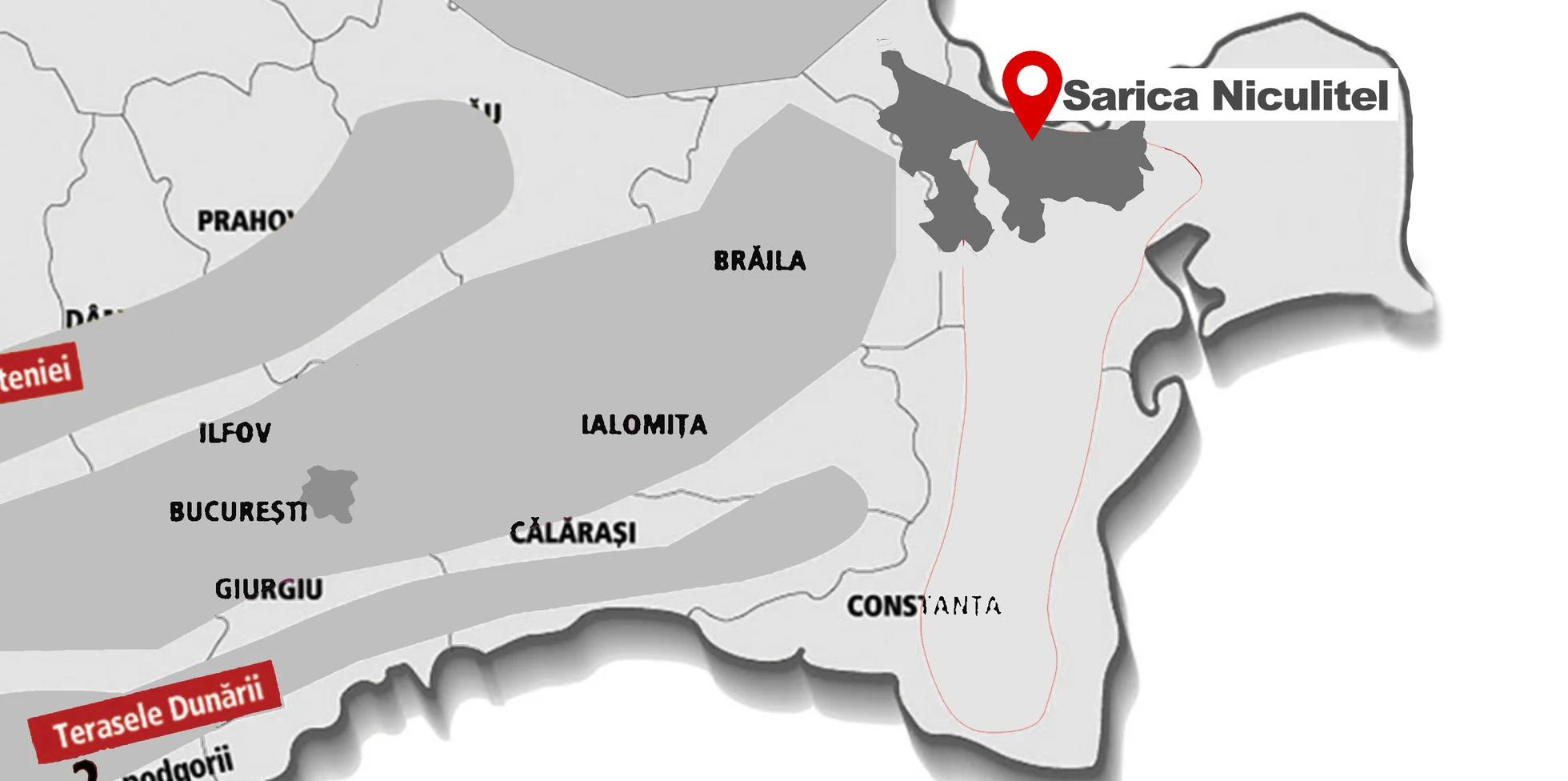Sarica Niculitel
Going up to the north, we come across a vineyard that the people of Tulcea claim is the oldest known vineyard area on the land of Dobrogea - the Sarica Niculitel vineyard. The wine-growing centers are in Măcin, Niculiţel and Tulcea. A specific white wine is the Aligoté, originally a French variety, in which the Danube fish "swims" perfectly, making up a seasoned menu with goat cheese or Dobrogean sheep.
The Sarica Niculitel vineyard is located in the north of Dobrogea, in the immediate vicinity of the western part of the Danube Delta Biosphere Reserve. Initially, the Sarica Niculitel vineyard had an area delimited around the village of Niculitel, with the Sarica, Badila and Cocos fields. This is the real area of the Sarica Niculitel vineyard. Later, its area was expanded through all kinds of legal regulations, with the aim of helping the producers from the neighboring wine centers and to have the right to use the Controlled Designation of Origin (DOC) SARICA NICULITEL. This designation of origin helps in the sale of the wines produced by them.
Only in these three plains, Sarica, Badila and Cocos, the vine finds the unique pedoclimatic conditions that have consecrated the wines obtained here, respectively: the northern exposure in its entirety, the vicinity of the riverine lakes of the Danube, i.e. the western part of the Danube Delta Biosphere Reserve and the extensive forests, located in the immediate vicinity to the south. These three factors, the northern exposure, the proximity to the Danube which sends towards the vines water vapors that are released during the hot summer days and the extensive forests in the southern part are of a nature to mitigate the scorching during the summer, the grapes obtained here having characteristics that give the wines a typicality unheard of in other wine-growing areas and unheard of even in the wine-growing centers neighboring the Niculitel wine-growing center.
The multiannual average temperature is a little over 10 degrees Celsius, and the precipitation is somewhere around 440 mm. Regarding the soil, the main rock that led to its formation was loess. The soil is permeable, of medium porosity, sandy loam, with very good drainage, not allowing water to stagnate for a long time. Predominantly chernozem.
Almost all medieval historical vestiges or ancient archaeological finds from the Sarica Niculitel vineyard have vine motifs inlaid or painted on them. Created by the gods for them and for their happiness, it was cleverly stolen by the farmers of the Sarica Niculitel vineyard and with much dedication, as is imperatively required in any art, they surpassed them, the immortal gods, in the art of cultivating this sacred plants and in the art of producing Bacchic liquor.
One of the first documents attesting to wine as part of the main products of the northern Dobrogean laborers is dated in 1412. In 1574, the Pole STRYICOWSKI is served by the northern Dobrogean peasants with "grapes from which wine is made". On September 6, 1803, in the speech about vadrarit from Hrisovul by ruler Alexandru Moruzi, it is mentioned about the wine brought to Moldova from Niculitel.
See the wines produced in this area:
Caii de la Letea

